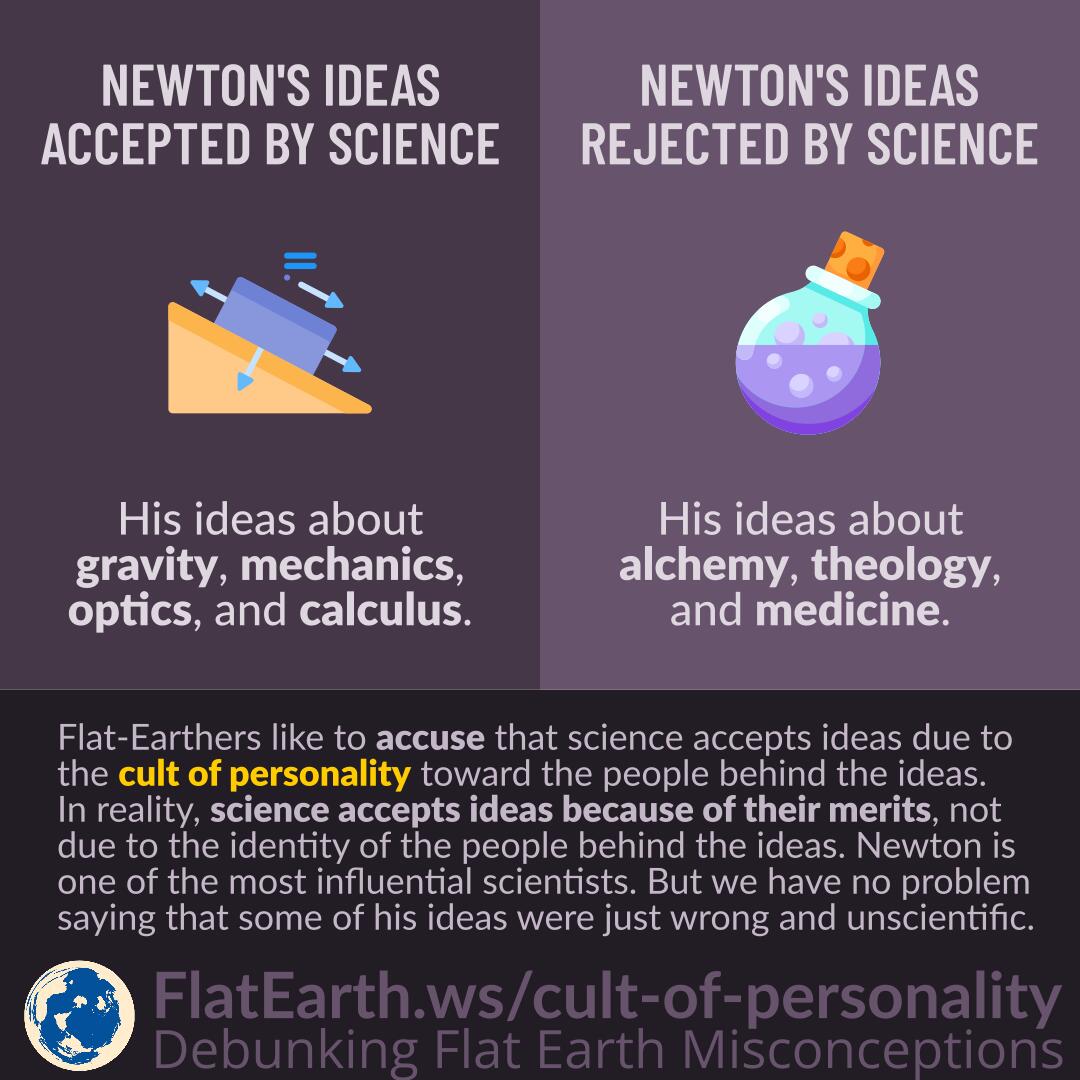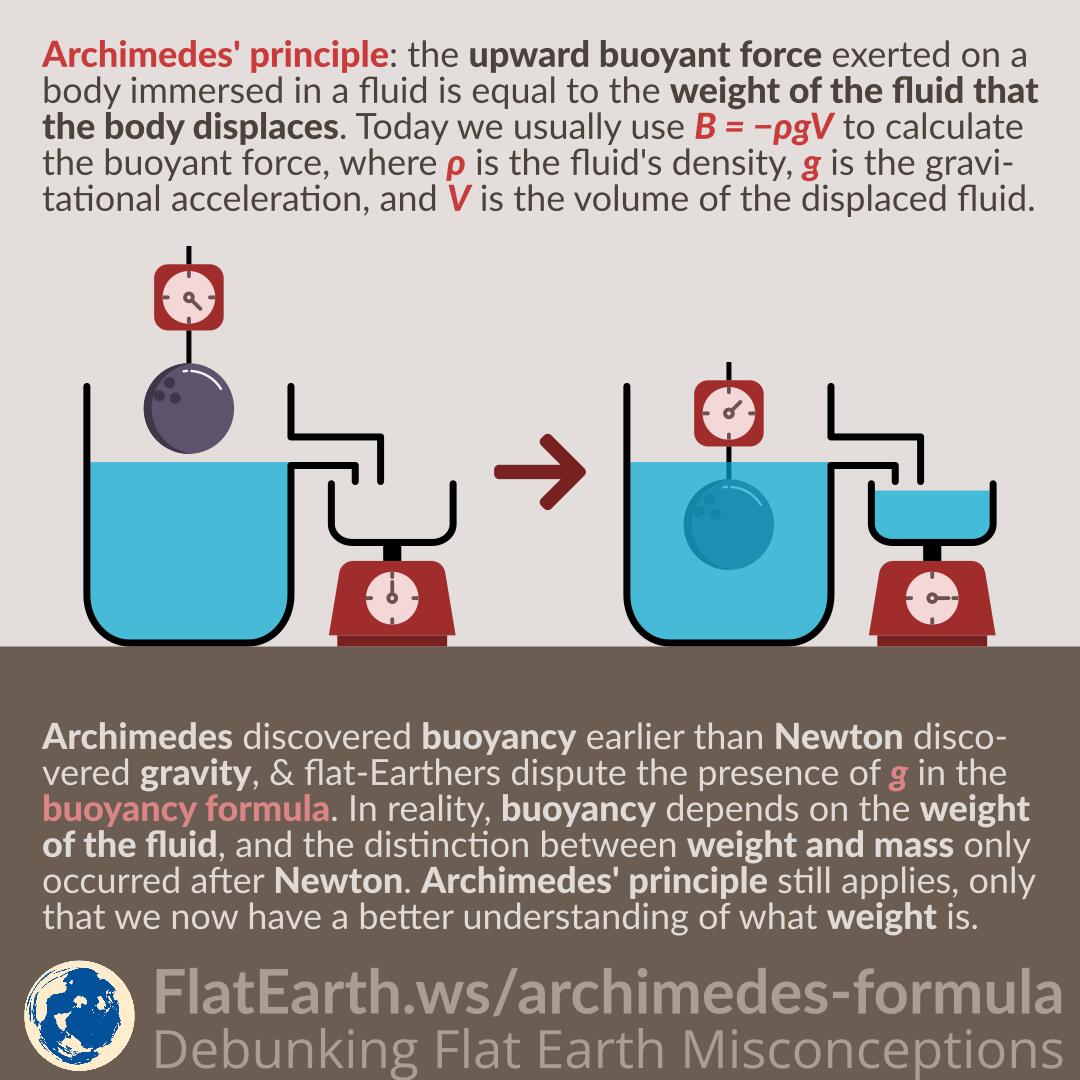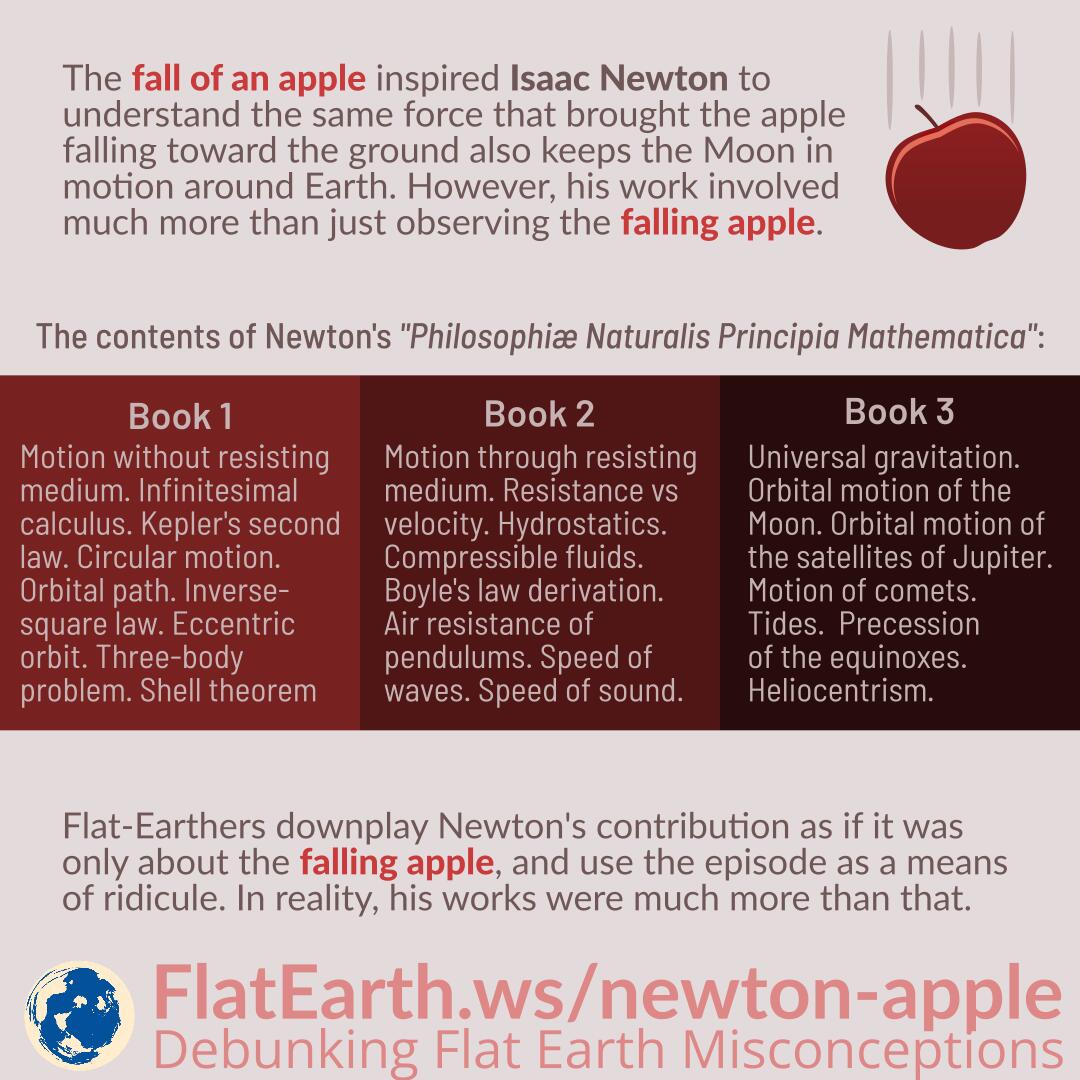Flat-Earthers like to accuse that science accepts ideas due to the cult of personality toward the people behind the ideas. In reality, science accepts ideas because of their merits, not because of the identity of the people behind the ideas.
Isaac Newton is considered one of the most influential scientists ever. But we have no problem saying that some of his ideas were just plain wrong and not scientific.





